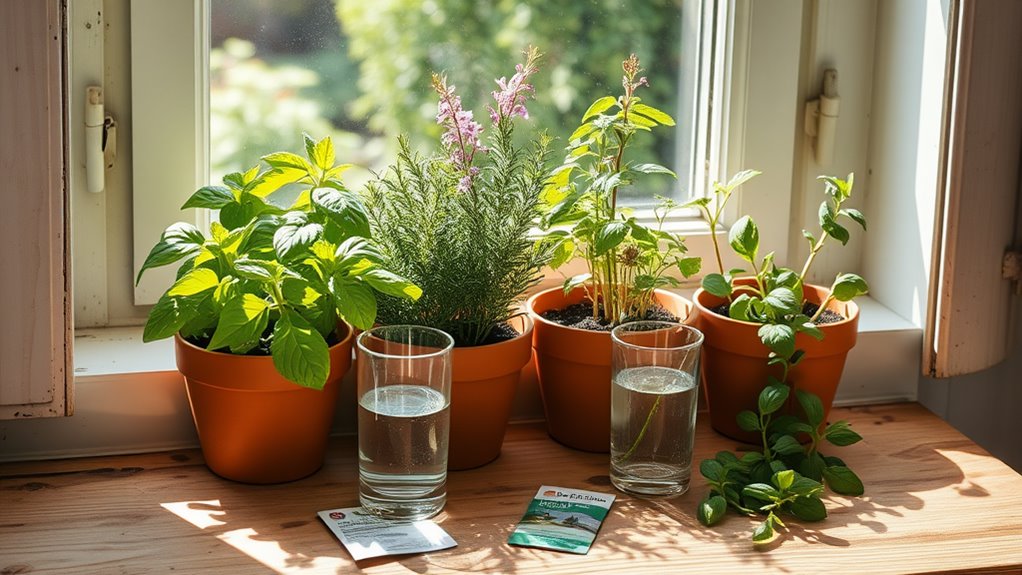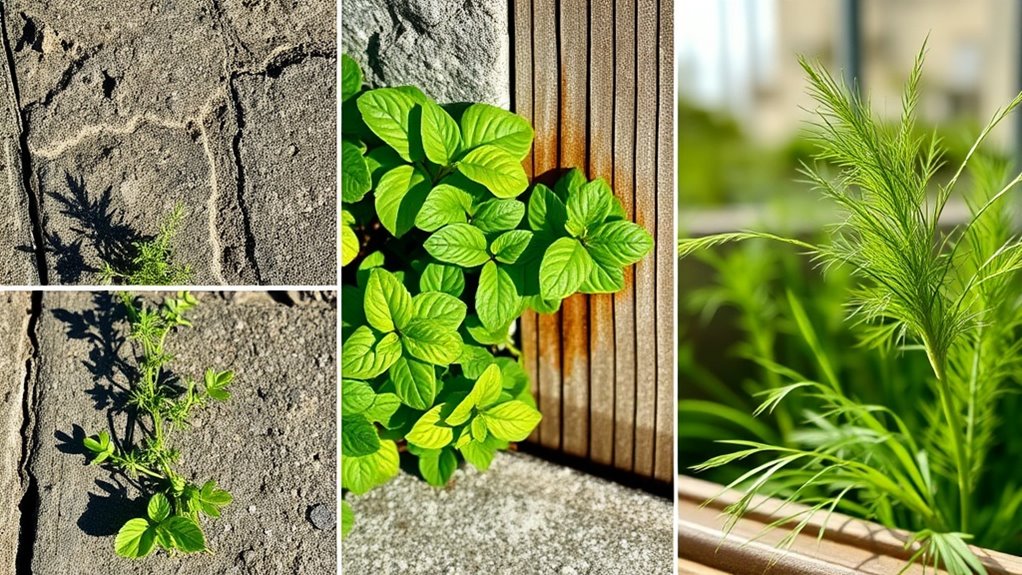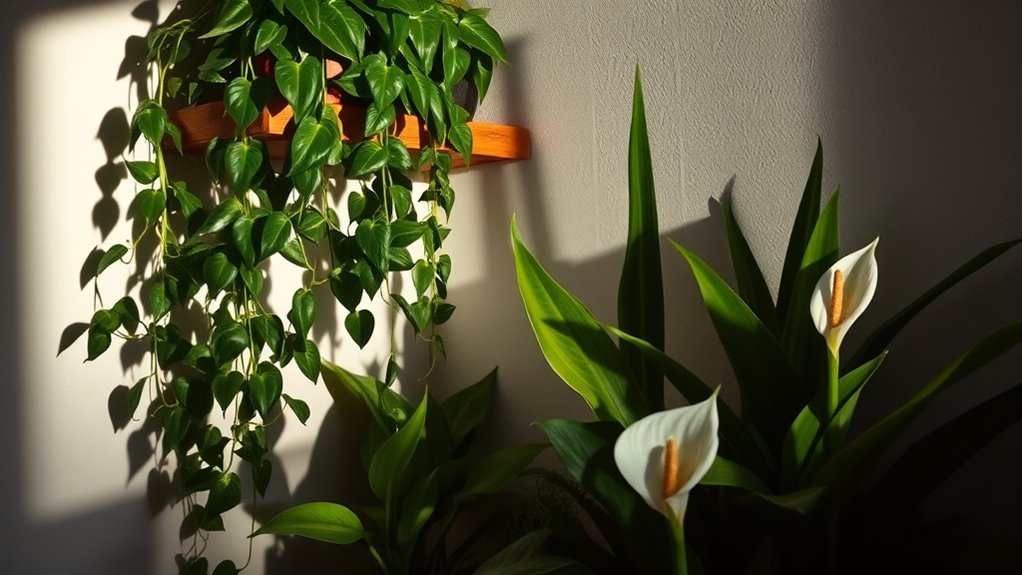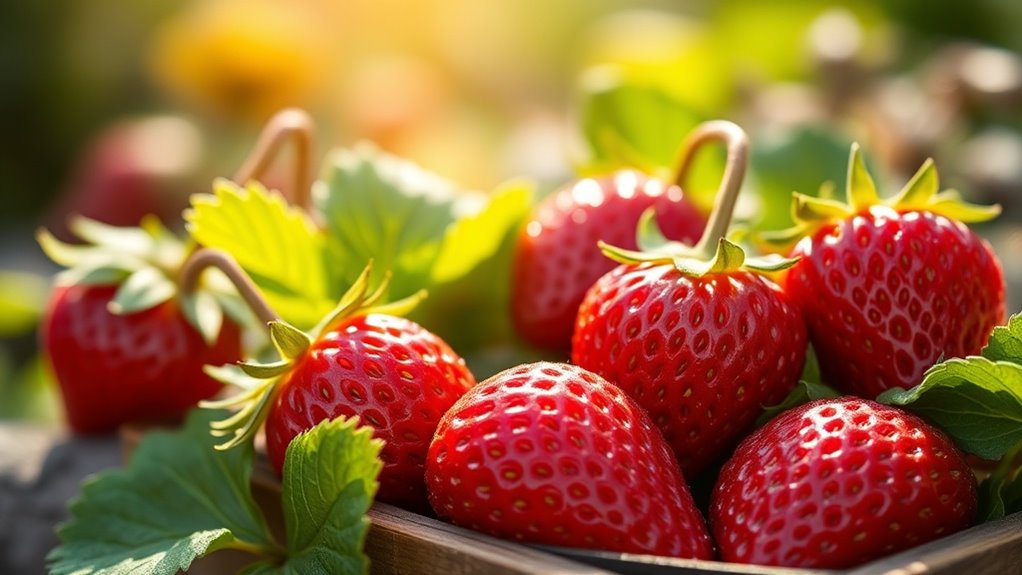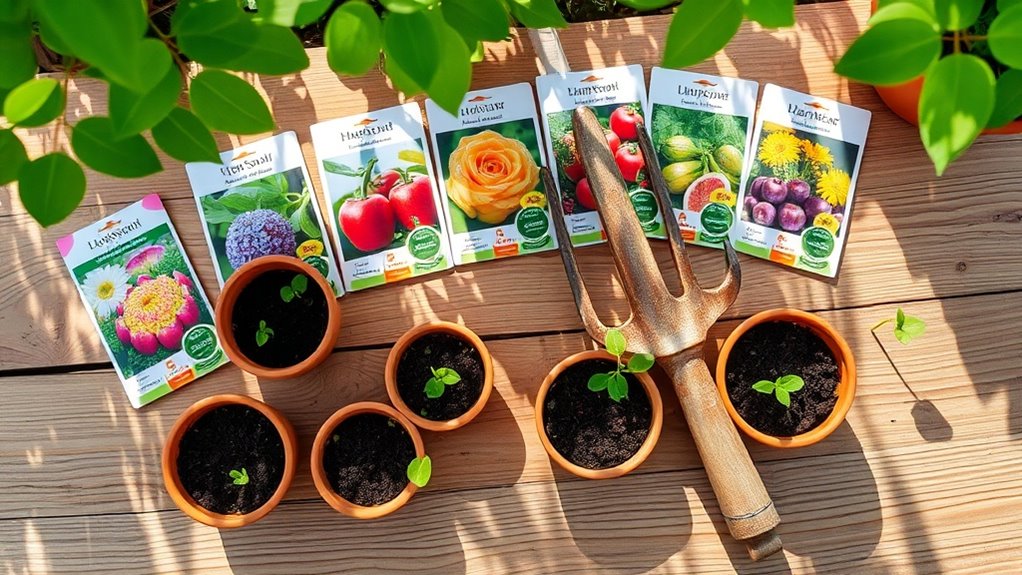How to Grow Fresh Herbs Indoors Without Special Equipment
Growing fresh herbs indoors can feel like a culinary secret, waiting to be unlocked. By selecting the right herbs and understanding their needs, you can cultivate a thriving indoor garden without any fancy gear. From choosing suitable containers to mastering watering techniques, each step is crucial for your success. Ready to transform your kitchen into a fragrant oasis? Let’s explore how to set the stage for your herb-growing journey.
Key Takeaways
- Assess your available light to choose suitable herbs like basil and parsley that thrive indoors.
- Use pots with drainage holes and well-draining potting mix to prevent waterlogging.
- Position herbs near a south-facing window or use grow lights for adequate sunlight.
- Water only when the top inch of soil feels dry, ensuring pots drain excess water.
- Maintain indoor temperatures between 60°F and 75°F, and harvest wisely to promote growth.
Choosing the Right Herbs for Indoor Growth
When choosing the right herbs for indoor growth, what factors should you consider?
Start by assessing your available light—some herbs thrive in bright light, while others prefer low-light conditions.
Think about your culinary preferences; popular choices for indoor herb gardening include basil, parsley, and mint.
Consider growth habits too; some herbs, like chives, grow compactly, while others, like dill, can get tall.
Lastly, evaluate your maintenance level; if you want low-maintenance options, opt for hardy herbs like thyme and oregano. Additionally, selecting herbs that are suitable for indoor growth conditions can enhance your chances of success in maintaining a thriving herb garden year-round.
Selecting Containers and Soil for Your Herbs
Choosing the right containers and soil is crucial for the success of your indoor herb garden. Opt for pots with drainage holes to prevent waterlogging, which can harm roots. Terracotta or ceramic pots are excellent choices as they allow for airflow.
For soil, use a well-draining potting mix, ideally one designed for herbs or vegetables. You can also mix standard potting soil with perlite or sand to enhance drainage. Additionally, consider the importance of drainage when selecting your containers, as this can significantly impact herb health.
Fill each container with soil, leaving about an inch from the top. This setup ensures your herbs thrive, providing the right environment for healthy growth and robust flavor.
Understanding Light Requirements for Indoor Herbs
How can you ensure your indoor herbs receive the right amount of light?
First, place your herbs near a south-facing window, as they typically provide the most sunlight.
If that’s not possible, consider using grow lights for 12-16 hours daily.
Rotate your pots weekly to promote even growth.
Pay attention to each herb’s specific light needs; for example, basil thrives in bright light, while mint prefers partial shade.
Monitor your plants for signs of too little or too much light—yellowing leaves may indicate insufficient light, while scorched leaves suggest too much.
Adjust their position accordingly to foster healthy growth. Additionally, many herbs can flourish in low-light conditions, making them suitable for urban settings with limited sunlight.
Watering Techniques for Healthy Herb Growth
Watering your indoor herbs properly is crucial for their growth and overall health.
Here are some effective techniques to ensure your herbs thrive:
- Check soil moisture: Stick your finger into the soil; if it’s dry an inch down, it’s time to water.
- Water deeply: Give your herbs a thorough watering until water drains out the bottom.
- Use room temperature water: Cold water can shock the roots.
- Avoid waterlogging: Ensure pots have drainage holes to prevent root rot.
- Adjust frequency: Monitor your herbs’ needs seasonally; they might need more water in warmer months.
Additionally, maximizing sunlight is essential for indoor herb growth, as herbs thrive in bright light conditions.
Following these tips will help keep your herbs healthy!
Maintaining Proper Temperature and Humidity Levels
To ensure your indoor herbs flourish, maintaining the right temperature and humidity levels is essential.
Most herbs thrive in temperatures between 60°F and 75°F.
Avoid placing them near drafts or heating vents, as fluctuations can stress the plants.
For humidity, aim for around 40-60%.
If your home is dry, consider using a humidifier or placing a water tray with pebbles near your herbs.
Regularly misting the leaves can also help maintain humidity.
Monitor your plants closely; yellowing leaves may indicate low humidity, while wilting can signal too much dryness.
Adjust accordingly for optimal growth and flavor. Additionally, understanding the ideal conditions for specific herbs can further enhance your indoor gardening success.
Harvesting and Using Your Fresh Herbs
Once your herbs are ready to be picked, it’s important to use the right harvesting techniques to ensure they continue to thrive. You can enhance your dishes by understanding the culinary uses for each herb, bringing fresh flavors to your cooking. Let’s explore how to effectively harvest your herbs and incorporate them into your meals. Additionally, employing cut and come again greens techniques can maximize your herb yield throughout the growing season.
Harvesting Techniques Explained
How can you tell when your indoor herbs are ready for harvest? Look for signs like vibrant leaves and healthy growth.
To harvest effectively, follow these techniques:
- Use clean, sharp scissors or pruning shears.
- Cut stems just above a leaf node to encourage new growth.
- Harvest in the morning for maximum flavor and freshness.
- Avoid taking more than one-third of the plant at a time to ensure it continues thriving.
- Regularly check for pests or disease after harvesting.
These practices not only maintain your herbs’ health but also ensure you get the best flavor for your culinary creations.
Culinary Uses for Herbs
What better way to elevate your culinary creations than by incorporating fresh herbs?
Use basil to enhance pasta dishes, or sprinkle cilantro on tacos for a burst of flavor. Chives add a mild onion taste to salads and soups, while thyme complements roasted meats beautifully.
Don’t forget parsley; it’s perfect for garnishing and adding freshness to any dish.
Experiment by infusing oils or vinegars with your herbs for unique dressings.
Remember to chop herbs just before use to preserve their aroma and flavor.
With these simple tips, you’ll transform everyday meals into delightful culinary experiences. Enjoy your herb-filled creations!

